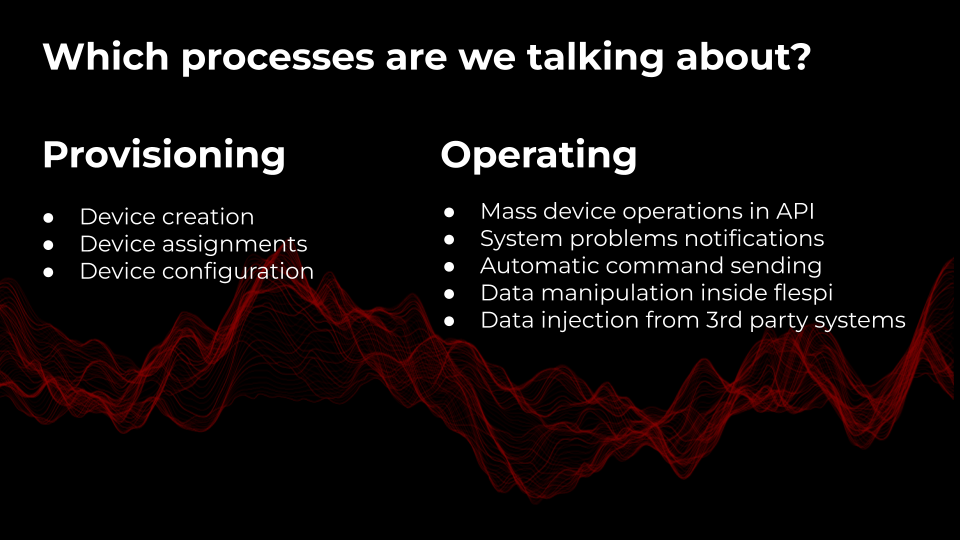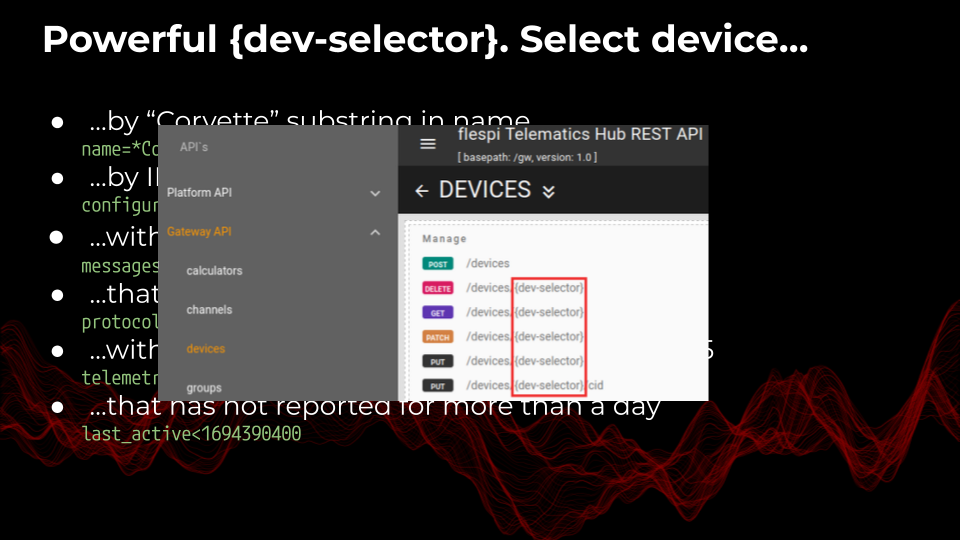List of topics we’ve previously covered on flespi conf 2023:
- Core flespi entities: channels, devices, plugins
- Integration with flespi
- Reports and notifications with flespi
As we’re going deeper to a more experienced level, it’s time to talk about automatization. It has become a recurring theme for the last decade. Both small businesses and major market players recognize the need for swift and seamless solutions that allow processes to run flawlessly, eliminating the potential pitfalls of human error. This not only saves resources but also transforms the term 'cost-efficiency' from a mere buzzword into a tangible reality. You also can make you go crazy as the data volume steadily increases, connections multiply and you've only one pair of hands.
Traditionally you’ve got to be a proficient developer to see through the lines of code to estimate whether an operation can be done in a queue or you can write a script performing a specific task. We’re listening to dozens of Helpbox sessions daily to carry out your requests (BTW did you know that's our dev team who's replying - not a rookie support line?). We trying to keep the balance between a device-oriented and a user-friendly platform. So, automation lets you perform heavy lumbering operations to upscale your business - as easy as pie.
When we refer to 'processes' in flespi, we categorize them into two groups: provisioning, which primarily involves initial tasks related to devices, and operating tasks such as device array operations in API, system notifications, automatic command sending, data manipulation, and ingestion from third-party platforms.
Working with a single device is suitable for quick tests, but what if you need to configure dozens of them? This can be achieved by adding devices in bulk, and there's a diverse range of options for creating them, including REST API calls, the UI in the channel, webhooks, or even a browser tool. Grouping devices streamlines the process, eliminating the multitude of individual calls required when assigning them to a stream, plugin, or calculator. Simply add a new device to a previously created group and establish a connection using one REST API request or a webhook. This same approach applies when configuring devices with macros or a curl script running in command line mode.
The operating section encompasses various techniques, such as using the {dev-selector} syntax, employing substrings in the 'name' field, applying an IMEI mask for a range of devices, and sorting based on specific protocols or storage amount size, among other possibilities. Additionally, webhooks deserve special mention for their ability to assist with system notifications, send commands in bulk, and perform different data operations within the platform, including data injection from third-party services (here's the post about webhooks use cases). But I guess it's enough said, watch the full video for more.
In our next installment, we will proceed with the next essential topic - how to make your flespi account secure and future-proof. Stay safe and stay tuned!

